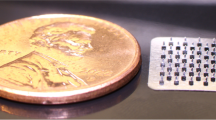Abstract
Topical formulations containing identical active agents are available in various vehicles and concentrations, which may affect percutaneous absorption. This study was undertaken to evaluate the in vitro percutaneous absorption pharmacokinetics of metronidazole in different vehicles and concentrations as the active agent in 6 topical formulations. Formulations were applied to sections from 3 cadaver skin donors, and percutaneous absorption of metronidazole was measured over a 48-h test period through the finite dose technique and the use of Franz diffusion cells. Metronidazole penetrates into and through human cadaver skin. Data show the general ranking of delivery of similar concentrations of metronidazole according to vehicle as cream > lotion > gel. The 48-h penetration of metronidazole in the human cadaver skin model was greatest with cream formulations and lowest with gel formulations. These results reveal the importance of the vehicle selected for penetration of metronidazole into the skin. The relevant target zone in rosacea is the dermis because this is the area where inflammation takes place. Additional studies are warranted to examine absorption of metronidazole into the relevant target zone and the correlation of absorption with efficacy.
Similar content being viewed by others
References
Wilkinson GR. The dynamics of drug absorption, distribution, and elimination. In: Hardman JG, Limbird LE, Gilman AG, eds.Goodman & Gilman’s The Pharmacological Basis of Therapeutics. 10th ed. New York: McGraw-Hill Medical Publishing Division; 2001: 3–30.
Schreiber S, Mahmoud A, Vuia A, et al. Reconstructed epidermis versus human and animal skin in skin absorption studies.Toxicol In Vitro. 2005; 19: 813–822.
Draelos Z. Assessment of skin barrier function in rosacea patients with a novel 1% metronidazole gel.J Drugs Dermatol. 2005; 4: 557–562.
Zip C. An update on the role of topical metronidazole in rosacea.Skin Ther Lett. 2006; 11: 1–4.
Franz TJ. Percutaneous absorption: on the relevance of in vitro data.J Invest Dermatol. 1975; 64: 190–195.
Franz TJ, Lehman PA. The use of water permeability as a means of validation for skin integrity in in vitro percutaneous absorption studies.Abst J Invest Dermatol. 1990; 94: 525.
Masini V, Bonte F, Meybeck A, Wepierre J. Cutaneous bioavailability in hairless rats of tretinoin in liposomes or gel.J Pharm Sci. 1993; 82: 17–21.
Wagner N, Berthaud C, Laffet G, Caron JC. Differential penetration of skin by topical metronidazole formulations.Adv Ther. 1998; 15: 197–205.
Yoo J, Reid DC, Kimball AB. Metronidazole in the treatment of rosacea: do formulation, dosing, and concentration matter?J Drugs Dermatol. 2006; 5: 317–319.
Author information
Authors and Affiliations
Corresponding author
Rights and permissions
About this article
Cite this article
Elewski, B.E. Percutaneous absorption kinetics of topical metronidazole formulations in vitro in the human cadaver skin model. Adv Therapy 24, 239–246 (2007). https://doi.org/10.1007/BF02849891
Issue Date:
DOI: https://doi.org/10.1007/BF02849891




